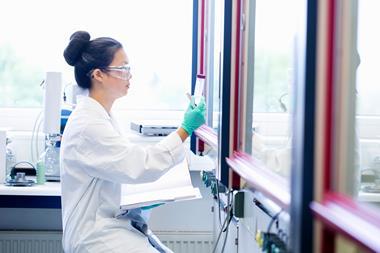Green light expected for new plants after months of deadlock
China is to focus on developing its coal chemicals sector in an effort to wean itself off imported oil, a senior government official has said.
According to Chen Shihai, deputy head of the industrial department of the National Development and Reform Commission (NDRC), the agency has finalised the coal chemicals industry development plan, which will be released soon. Speaking at the 2008 Methanol Summit, Chen also revealed that NDRC had lifted a virtual moratorium on new coal chemical projects, in place since August 2006.

’We have approved the preparatory work for several major coal chemical projects since late last year,’ Chen confirmed.
China produced 2.52 billion tonnes of coal in 2007 but also imported 159.2 million tonnes of oil, accounting for 46 per cent of total consumption.
Coal chemical plants can convert coal to oil or to industrially useful chemicals such as ethanol, methanol, dimethyl ether (DME) and olefins. But with most of China’s coal mines located in the country’s dry northwestern regions, policymakers have been reluctant to push the technology because it is notoriously water intensive.
However, Chen believes the new development plan will allow the coal chemicals industry to grow at a sustainable rate by carefully managing where new plants are built. The NDRC has also worked out strict rules which should ensure that larger, more efficient coal chemical manufacturers dominate the sector.
Shenhua Group, China’s biggest coal producer, is soon to open a plant expected to make 3 million tonnes of liquid fuel from coal. The factory was one of very few to get the go ahead amidst the tighter controls that were imposed in 2006.
Gonghong Chemicals Co, affiliated to Shandong Province-based coal mining firm Yankuang Group, is building another coal-to-liquid (CTL) factory in Shaanxi Province. Li Cunbao, Gonghong’s vice general manager, says firms planning plants that will convert coal to chemical feedstocks - rather than fuel - will be the main beneficiaries of the new NDRC policy. He doesn’t expect any new CTL project to win government approval.
’To produce liquid fuel equivalent to one tonne of petroleum will cost four tonnes of coal, which is too inefficient,’ Li told Chemistry World. But only two tonnes of coal are needed to make a tonne of methanol.
Despite the emphasis on efficiency, gleaning chemicals from coal will produce more carbon dioxide than using oil or natural gas as feedstocks because coal is richer in carbon. ’In the long term, carbon capture and storage can be employed to deal with the [carbon dioxide emission] problem,’ Li said.
Nonetheless, pushing coal chemicals could have environmental benefits. In the plan, coal with high sulfur content will be set aside for use in coal chemical plants, which could be fitted with better desulfurisation equipment than coal power stations, Chen says.
Hepeng Jia
Enjoy this story? Spread the word using the ’tools’ menu on the left.







No comments yet